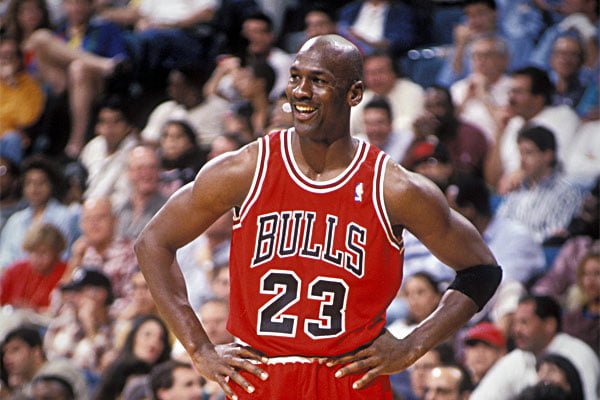Former Bears Star RB Who Did Everything to Leave for the Jets, Is Now Unhappy and Wants to Return
Feel the roar of Soldier Field, where the Chicago wind carries the hopes of a city that bleeds navy and orange. Once, a runner darted through that frigid turf, his legs churning dreams of greatness with every carry. He was the heartbeat of an underdog story, an undrafted gem who proved his worth in a Bears uniform. But a crowded depth chart and a clash of visions sent him packing, traded away for pennies in a move that still stings fans. Now, stranded in the shadow of New York’s bright lights, he pines for the grit of the Windy City. Can a lost son find his way back to where he belongs?
That runner is Khalil Herbert, the running back whose relentless drive once lit up Chicago’s backfield. Undrafted in 2021, he burst onto the scene with 1,069 rushing yards in 2022, a beacon of promise as the Bears’ RB2. But 2024 brought a bitter twist: the arrival of D’Andre Swift pushed Herbert to the bench, his carries dwindling to just 65 for the season. Frustrated by “limited touches” and a scheme under OC Shane Waldron that didn’t fit his bruising style, he demanded a trade. The Bears obliged, shipping him to the Cincinnati Bengals in November 2024 for a measly 2025 seventh-round pick—a deal fans on X branded a “giveaway.” GM Ryan Poles called it a “depth chart decision,” but Herbert’s public discontent boiled over. After rushing for 150 yards in a Week 10 win over the Steelers, he didn’t hold back in a Bengals post-game interview: “Chicago never used me right—I’m a starter, and they built the wrong RB room.” The words cut deep as the Bears’ run game faltered, with Swift sidelined by injuries and Roschon Johnson plagued by fumbles, fueling #TradeBackHerbert trends on X.
The saga didn’t end there. Herbert signed a one-year deal with the New York Jets (5-0) in 2025, chasing a role in their high-flying offense. But the Jets’ backfield, led by Breece Hall, has left him as a backup once more, his 92 yards through five games a faint echo of his potential. The scheme doesn’t suit him, and his Instagram memes shading Chicago’s offense hint at deeper regrets. Insiders whisper of his longing:
“Chicago was where I proved I belong. I let frustration cloud that, but I’d run through walls to wear that Bears logo again.” Those words stir memories of his 4.6 yards-per-carry grit, his knack for breaking tackles. Bears fans are torn—some scorn the outspoken exile who forced his way out, others see a 27-year-old spark who could revive a stumbling ground game. With the Bears eyeing a playoff push in 2025, could a reunion heal the wounds of a hasty trade? Football is more than schemes—it’s heart, mistakes, and the pull of home. As the Chicago skyline looms, only the field will tell if Herbert’s exile ends.
BREAKING: Michael Jordan shocked basketball and football fans when he announced a $50 million sponsorship deal with Washing Commanders superstar Art Monk

The sports world was set ablaze this week as basketball icon
This partnership doesn’t just unite two legendary names—it redefines how athletic greatness is celebrated across different sports. What may appear to be a simple endorsement is, in truth, a declaration of mutual respect, leadership, and timeless influence.
As Art Monk proudly shared:
“Greatness recognizes greatness. This isn’t just a deal—it’s a statement.”
That single quote perfectly captures the essence of the collaboration: two titans of American sports uniting to inspire a new generation of athletes.

Who Is Art Monk? A Legacy Beyond the Gridiron
To understand why this announcement has resonated so deeply, one must appreciate Art Monk’s monumental legacy in professional football.
-
Monk is one of the
most respected wide receivers in NFL history, spending the majority of his career with Washington (then the Redskins). -
He captured three Super Bowl titles (XVII, XXII, XXVI) and was a
multiple-time Pro Bowl selection. -
Monk became one of the first players to redefine the wide receiver position, combining athleticism with intellect and professionalism.
-
In recognition of his career, he was inducted into the
Pro Football Hall of Fame.
Recently, Syracuse University—where Monk played college football—announced plans to retire his iconic No. 45 jersey at the JMA Wireless Dome on November 29, during the matchup with Boston College. The ceremony serves as a testament to his enduring legacy and the respect he commands within the sport.
Additionally, the Washington Commanders organization confirmed that Monk’s No. 81 jersey will soon be retired permanently, ensuring that his name will forever be synonymous with the franchise’s golden era.
Clearly, Art Monk is not just a retired athlete—he’s a living symbol of discipline, humility, and excellence. Those qualities make him the perfect ambassador for a brand built on greatness.
Why Jordan Chose Monk: A Strategic Masterstroke

Bridging Two Sporting Worlds
Air Jordan has long been synonymous with basketball excellence. Yet, partnering with a football legend like Monk expands the brand’s reach into a broader audience—
This cross-sport alliance symbolizes a cultural bridge: it’s no longer about basketball or football, but about the spirit of competition itself. It’s a strategic move to capture fans who admire resilience, leadership, and legacy—values shared by both Monk and Jordan.
Leadership and Character
Art Monk’s leadership both on and off the field has inspired generations. Known for his quiet confidence and unwavering work ethic, he embodies the same discipline and humility
By choosing Monk, Jordan Brand communicates a powerful message:
“Our products are not just for athletes—they are for leaders.”
It’s an alignment of values, not just marketing goals.
Uniting Two Icons of Excellence
Few collaborations can match this level of prestige. Michael Jordan revolutionized basketball—and the business of sports branding. Art Monk elevated the image of what it means to be a professional athlete in the NFL.
Together, they represent two sides of American greatness: precision and perseverance. The announcement of a $50 million partnership instantly became a viral headline, captivating fans across both NBA and NFL communities.
Challenges Ahead
Despite its promise, this partnership is not without challenges.
-
Cultural and Fanbase Divide
The worlds of basketball and football have vastly different cultures, fan expectations, and media ecosystems. The key for Air Jordan will be to integrate both identities without alienating its core basketball audience. -
Skepticism from Loyal Fans
Hardcore Air Jordan enthusiasts might view this expansion as risky—potentially diluting the brand’s basketball heritage. Jordan Brand will need to reassure fans that its core identity remains intact, even as it broadens its horizons. -
Return on Investment (ROI)
A $50 million endorsement deal is massive by any measure. The collaboration must generate both tangible sales and intangible brand value—through merchandise, events, and digital storytelling—to justify the scale of investment -
Media and Image Management
Every move by Jordan and Monk will be under the microscope. Public appearances, campaigns, and interviews must be meticulously managed to maintain authenticity and avoid missteps.
How This Could Change the Game
If executed strategically, the Jordan–Monk partnership could reshape sports marketing in several profound ways:
Cross-Sport Product Lines
Imagine a collection that fuses basketball design with football toughness—
Unified Media Campaigns
Expect to see Jordan and Monk in
Fan Engagement Events
Picture a tour where both icons meet fans in major cities like Chicago, Washington, and New York. Live interviews, youth clinics, and motivational talks could create a deeper emotional connection with consumers.
Expanding the Air Jordan Brand Identity
This deal signifies a shift from being “the basketball brand” to becoming a universal symbol of excellence. By partnering with a football legend, Air Jordan reinforces its mission: greatness is not confined to a single court or field—it’s a mindset.
A Visionary Move for the Future
This partnership could become a blueprint for future sports marketing. By pairing Hall of Famers from different leagues, brands can reach multiple audiences at once—uniting fans rather than dividing them.
Moreover, it demonstrates Jordan Brand’s evolving strategy: honoring legacy while embracing innovation. It’s not just about sneakers; it’s about building bridges between generations and disciplines.
The timing couldn’t be better. As sports increasingly blend entertainment, fashion, and lifestyle, collaborations like this one can redefine the meaning of “influence.”
Final Thoughts
The $50 million endorsement deal between Michael Jordan and Art Monk may go down as one of the most iconic partnerships in sports history. It transcends traditional sponsorship—it’s about legacy, respect, and unity.
Both men are paragons of integrity and excellence, and together they deliver a powerful message to the world:
“True greatness has no boundaries.”
As the Air Jordan campaign with Art Monk unfolds, fans can expect not just new products—but a new philosophy of athletic greatness, one that connects the basketball court with the football field, and the past with the future.




